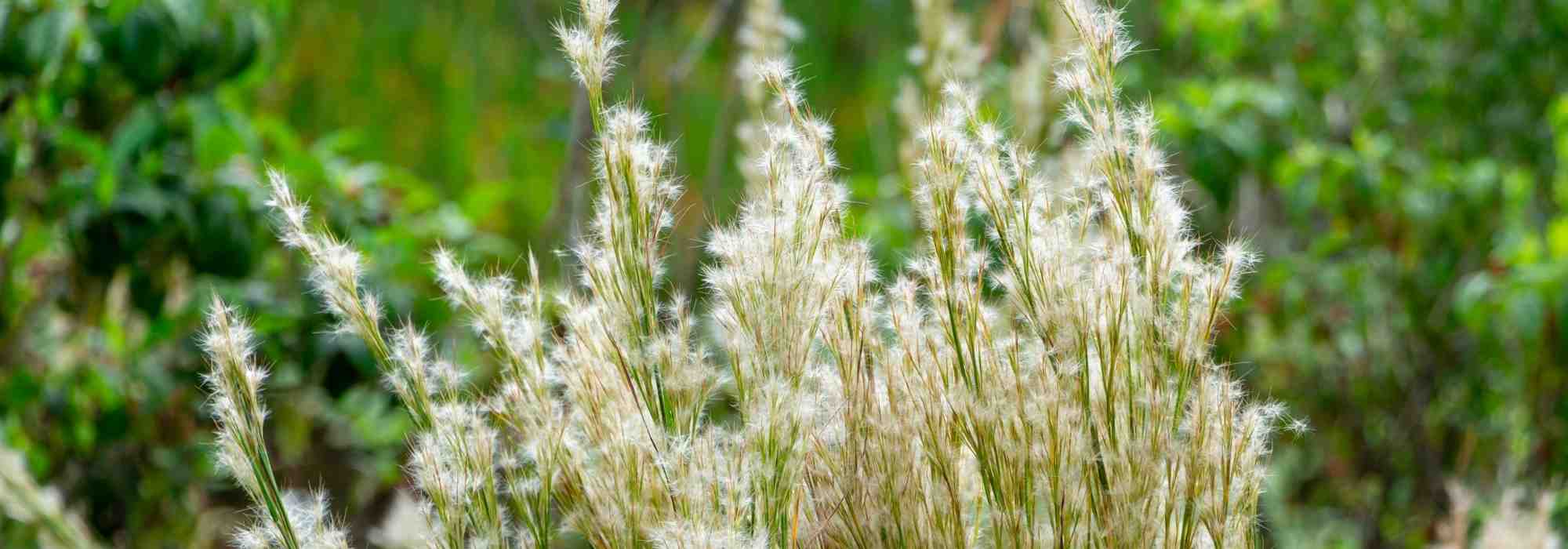
Andropogon: planting, growing and care
Contents
Andropogon in a nutshell
- Andropogon is a beautiful grass appreciated for its elegant upright silhouette
- It forms a tuft of fine foliage with changing colours
- It produces magnificent silky spikes at the end of summer under the sun!
- Easy to grow, it prefers dry, poor, and sunny soil
- Stunning in wildflower beds or naturalistic meadows
A word from our expert
Less known than its cousins the stipas, pennisetum and other grasses, Andropogon, also known as “big blue stem”, is a large, hardy grass that deserves attention. This “beauty of the fields” is appreciated for its upright silhouette, its long blue-green leaves that take on beautiful hues in autumn, and its flowering in light spikes. The most commonly cultivated for their ornamental value are the Andropogon gerardii, Andropogon hallii and Andropogon virginnii. Some cultivars like ‘Prairie Sommer’ display lovely greyish-blue foliage that turns to coppery red in autumn.
Forming clumps that are both flexible and stiff, it can grow to over 1.5 m when in flower. Andropogon is a robust grass that fears neither wind nor cold, tolerates moderate drought, and thrives in sunny, preferably sandy and poor soil, although it accepts any garden soil.
It is an easy plant to grow, requiring little maintenance, and is never diseased.
Like all grasses, it is interesting for adding lightness to displays. It fits well in all natural gardens, in borders, rockeries, and naturalistic meadows. Discover it!
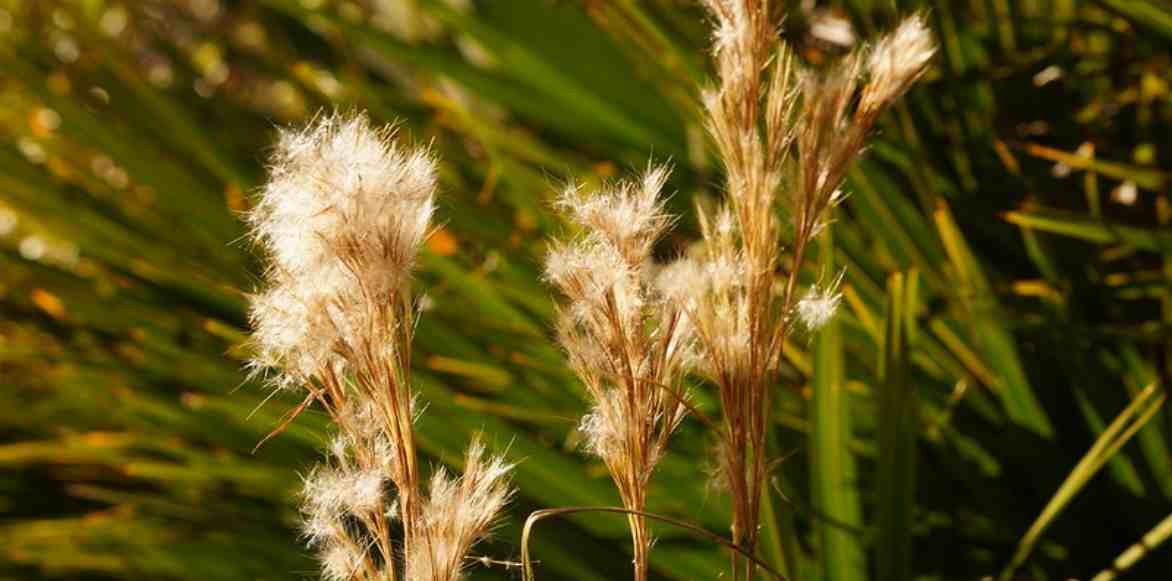
Andropogon virginicus (Photo: A. Edmonds)
Description and botany
Botanical data
- Latin name Andropogon
- Family Poaceae
- Common name Sand Blue stem, Big blue stem, Hill Bluestem
- Flowering August to September
- Height 60 cm to 1.5 m
- Exposure Sun
- Soil type Sandy, poor
- Hardiness -15 to -20°C
Andropogon is a perennial herbaceous plant from the Poaceae family, commonly known as grasses, alongside Pennisetum, Stipa, Fescues, and Panicum virgatum, of which it is a close relative. Native to the warm, dry prairies of North America, it can be found from Canada to Mexico. It thrives in sandy, poor soils, hence its aptly named “sand bluestem”.
Of the hundred species within the genus, only a few species – Andropogon gerardii, Andropogon hallii, and Andropogon virginicus – are cultivated for ornamental purposes.
This tall grass forms an upright tuft with a habit that is both flexible and stiff. Sometimes a bit slow to establish, it develops from a rhizomatous stump, never becoming invasive. The roots penetrate deeply into the soil, making it quite drought-resistant and allowing it to thrive in poor soils. It grows from 1 m to over 1.8 m in height, with a spread of about 60-70 cm. Andropogon virginicus has a more modest growth, not exceeding 60 cm in height.
Andropogon boasts superb fine, blue-tinged foliage, which is why Americans have named it ‘Big Bluestem’. Like many grasses, the leaves of Andropogon are linear, very long, and thin. Flat and sheathing, they can reach up to 60 cm in length. In autumn, this deciduous foliage gradually takes on lovely shades of russet, purplish pink, and copper.
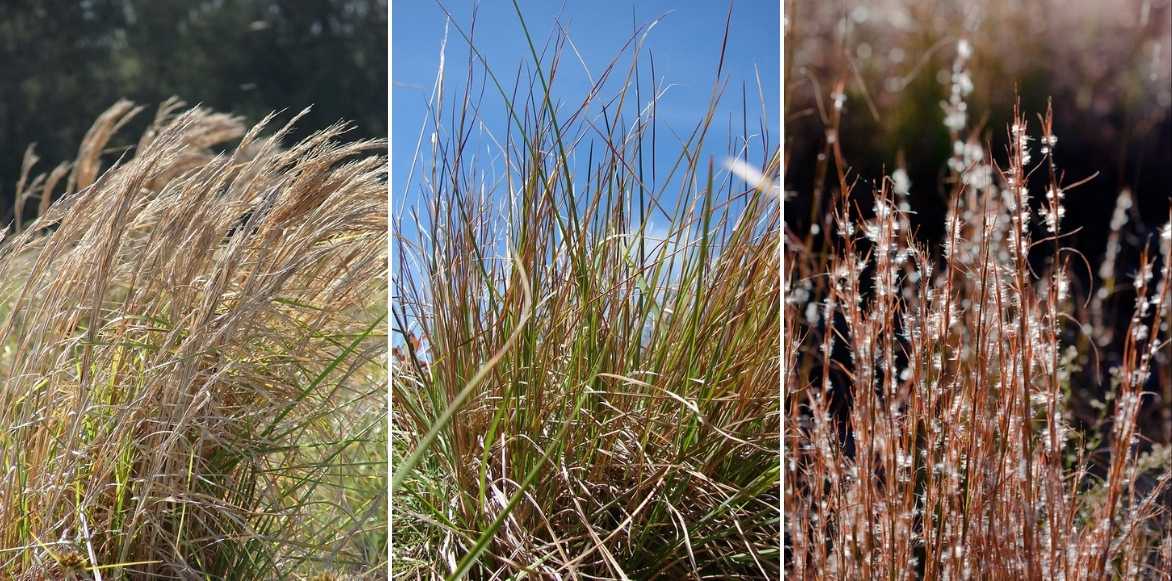
Andropogon glomeratus var pulmilus and Andropogon virginicus (Photos: FK Starr and G. Peterson)
The sand bluestem is also appreciated for its airy flowering. From this mass of ribbon-like foliage emerge numerous culms, sometimes branched, slender, and very sturdy against the wind. From August to September, they bear inflorescences in spikelets, which are composed of small flowers. The spikes emerge in yellow or silver tones, then turn orange and reddish-brown, similar to the very colourful cultivar ‘Prairie Sommer’. The overall effect is a culm with rosy hues. These feathery spikelets beautifully capture the light, especially when they shimmer in the sun. They are so fine that they sway with the slightest breeze.
At the end of summer, the plumes bear fruit, and the seeds, dispersed by the wind, self-seed spontaneously in the garden wherever they please.
Graphical and light, the flowering stems can be incorporated into bouquets. The plant continues to provide interest in winter when the tuft dries and frost covers the culms. You can therefore wait until early spring to cut back the foliage.
It can be planted alone or in large masses in large beds and naturalistic prairies, to highlight a path or a border.
“`
Read also
Grasses: which variety to choose?Main species and varieties
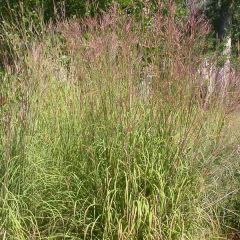
Andropogon gerardii Prairie Sommer
- Période de floraison September, October
- Hauteur à maturité 1,50 m
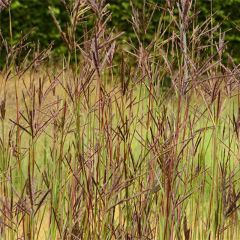
Andropogon hallii Purple Konza
- Période de floraison September, October
- Hauteur à maturité 1 m
Planting Andropogon
Where to plant it?
As Andropogon has good hardiness (down to -20°C), it can be planted in regions with a cold climate, even tolerating drying winds, sea spray, and rain. Once well established, it also withstands dry summers relatively well and can endure occasional drought. It is therefore a robust grass that thrives in contrasting climates: cold winters and hot summers.
It requires plenty of light to flourish. If given maximum sun and brightness, it will be even more beautiful and colourful!
It is an undemanding plant, accustomed to difficult conditions, that thrives best in poor, well-drained soils, which can be stony, sandy, or even rocky and calcareous. A soil that is too rich would encourage foliage growth, making the clump less resistant to wind and rain. However, it is capable of adapting and can also do well in ordinary soil that is dry to slightly moist. The most important factor is to plant it in well-draining soil that does not retain stagnant moisture in winter.
It fills out in two seasons, and with its tall, graceful silhouette, it can enhance the backdrop of a flowerbed, behind shorter plants. Like all grasses, it adds height and lightness to any display.
It can be planted in scattered groups in naturalistic meadows or in large wild flowerbeds where it lightens the composition, in a large border, in dry rockeries, or in a wild mixed border.
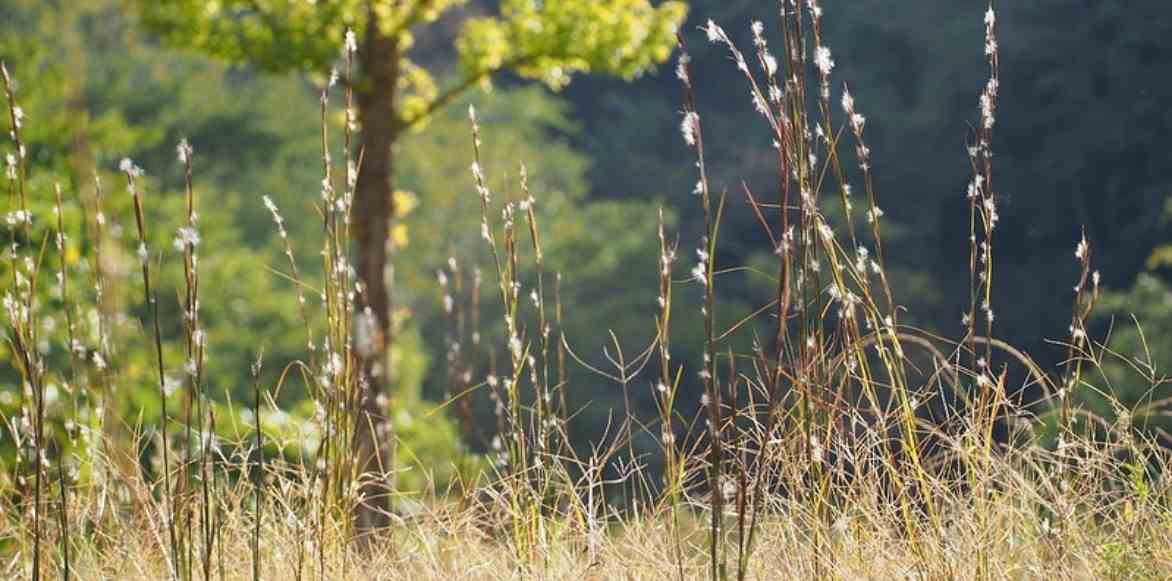
Andropogon (Photo: H. Koh)
When to plant it?
Planting Andropogon should be done in spring from March to April or in autumn from September to November, avoiding periods of frost or extreme heat.
How to plant it?
For planting in rows, space the plants 40 cm apart. To structure a large wild area, plant in groups of 3 plants per m².
- Dig a hole approximately 40 cm in all directions
- Loosen the soil well
- Add a handful of coarse sand to lighten it, especially if your soil tends to retain water
- Spread a drainage layer at the bottom of the hole
- Place the root ball at the bottom of the hole with the collar level with the soil
- Lightly firm the soil
- Water generously and then regularly the following summer to help the plant establish its roots
For more information, consult our article on planting grasses!
Read also
Pruning grassesCare
Andropogon is a robust and hardy young plant that requires little attention once well established. Ensure to water regularly during the first year after planting, as long as the root system is not yet well developed. After that, except in cases of severe and prolonged drought, it is content with rainwater. Avoid watering, especially in winter. It is primarily sensitive to excess water.
Do not add compost or fertiliser; it tolerates poor soils well and will look even better for it. It will even take on more beautiful autumn colours!
Clean up the old dry foliage at the end of winter, just before the new growth starts, as this helps stimulate the growth of new foliage. Using shears, cut the flower stems at their base to encourage the appearance of new shoots.
Andropogon is not susceptible to diseases or pest attacks.
On the subject, discover Michaël’s tips: Grasses: those that are pruned, those that are coiffed
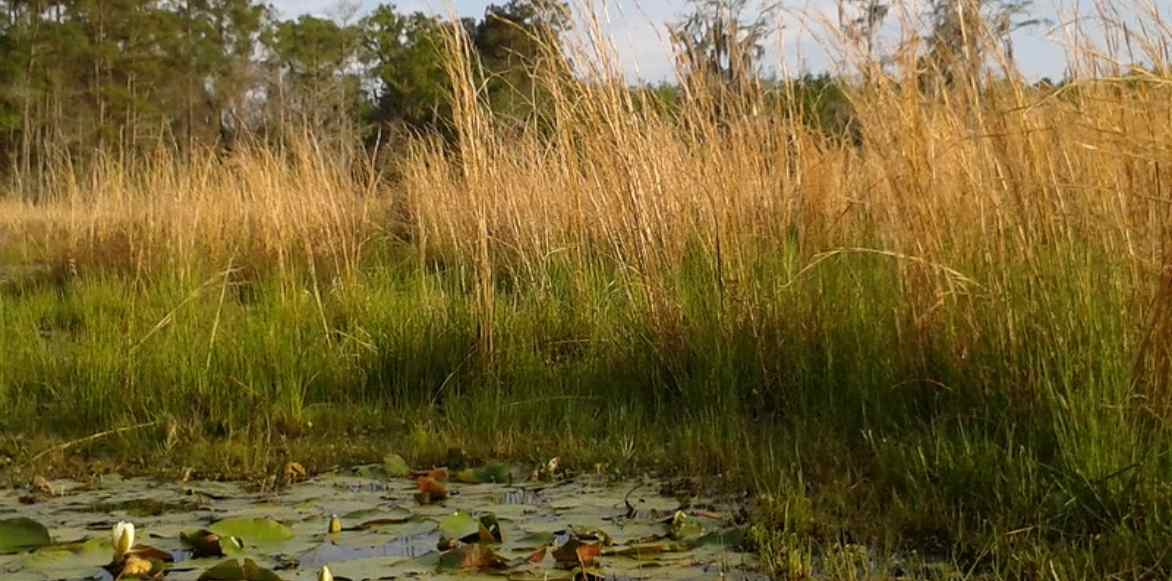
Andropogons by the pond (Photo JS Quarterman)
Multiplication
If Andropogon tends to self-seed spontaneously, as with other grasses, the best method is to divide the clumps. Sowing is still possible, but it is longer and more tedious. The best time to divide the clumps is early spring, before the new shoots start to emerge. It is also possible to do this in autumn. Division should be carried out when the clumps are well-developed, after 3 or 4 years of cultivation.
- Start by cutting back the clump
- Using a fork, carefully lift the clump
- With a spade, divide it into several sections, each containing a few stems and roots
- Replant these rootstocks immediately in the chosen location
- Water at planting and then in the following weeks
Pairing ideas
Andropogon works wonders in naturalistic gardens. Undemanding, it easily finds its place in a low-maintenance garden alongside other plants that tolerate drought and require little attention. It stands out in a wildflower bed as well as in large wild spaces. With its decorative foliage for a good part of the year and its relatively tall stature, it adds a lot of lightness and movement, softening all the blooms. Don’t hesitate to place it in the background behind shorter plants. It creates a backdrop of foliage that enhances more colourful flowers.
In large flower beds, it easily associates with many summer or autumn-flowering perennials. It enjoys surrounding itself with robust and undemanding plants that, like it, love the sun and well-drained soils; wormwoods, Gauras, Agastache, and penstemons. It will be a perfect companion for Achilleas and Buenos Aires Verbenas.
In a large naturalistic meadow, mix it with other ornamental grasses with decorative spikes such as Miscanthus, Pennisetums, Stipas, and Hordeum jubatum or Bearded Barley. Accent the scene with the colourful blooms of Heleniums and Asters.
Planted in small groups, it will create a backdrop for the vibrant summer blooms of Echinaceas (‘Green Jewel’, Echinacea purpurea), Helianthus, or rudbeckias calming the fire between possibly too strong hues.
It also allows for the creation of beautiful autumn scenes with vibrant tones. Pair it with shrubs whose foliage takes on beautiful red, copper, orange, and yellow hues, such as Smoke Trees or Cornels. Complete this autumn tableau with some clumps of Panicum virgatum (‘Hot Rod’), autumn sedums (Sedum ‘Orange Xenox’, ‘Jose Aubergine’), and the late blooms of Echinacea (‘Tangerine Dream‘), coreopsis, agastaches (‘Summer Sunset’, ‘Barberi Firebird’ or ‘Kudos Gold’) or Achillea millefolium ‘Feuerland’.
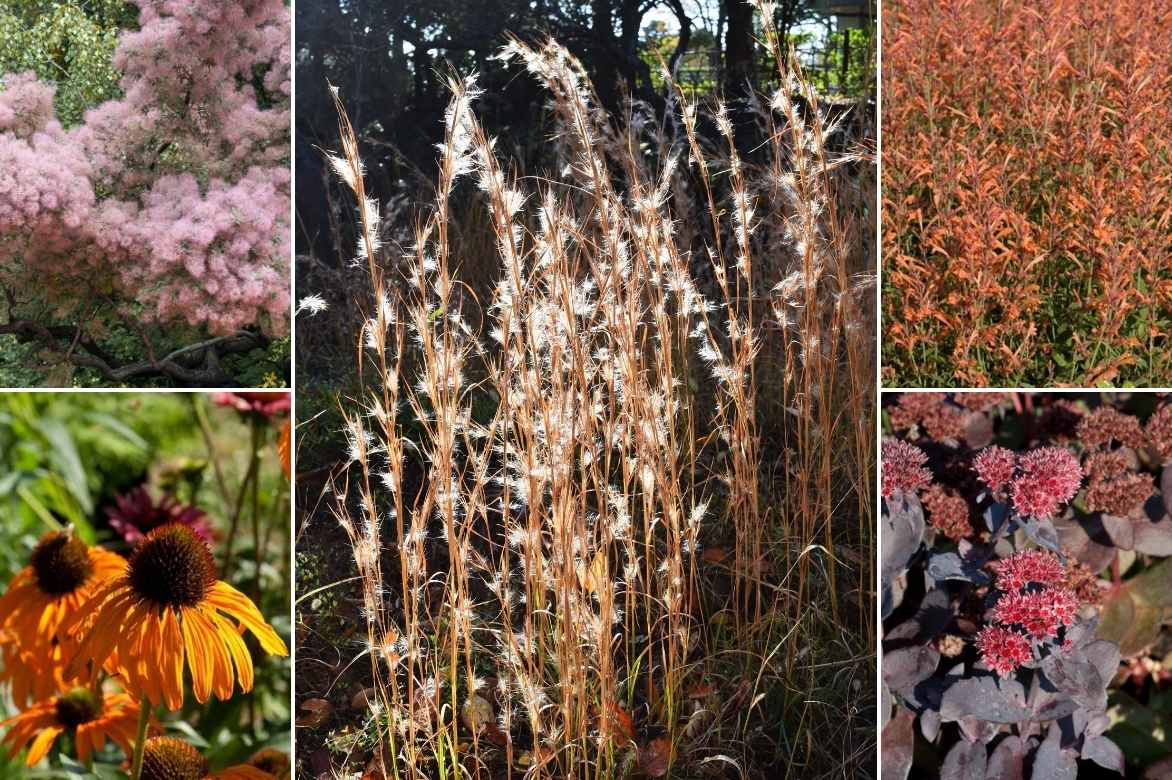
Autumn colours in a bed with Andropogons, a Cotinus coggygria, Echinaceas ‘Tangerine Dream’, Panicum virgatum ‘Hot Rod’, and some hybrid Sedums ‘Jose Aubergine’
Useful resources
- Discover the 10 grasses you must have in your garden
- Our tips on pruning “Grasses: those that are pruned, those that are trimmed
- Subscribe!
- Contents































Comments